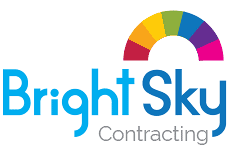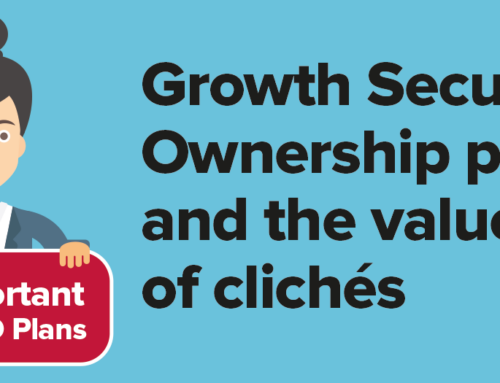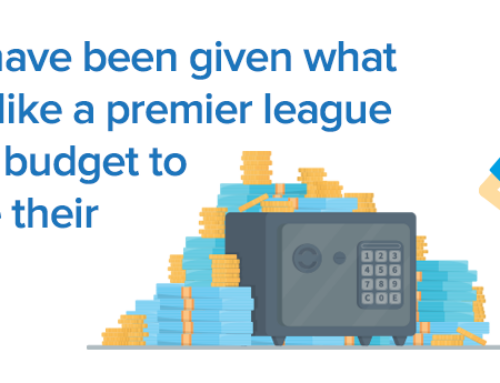Find out about the rules for disclosure of VAT, indirect and direct taxes and National Insurance contributions tax avoidance schemes and the penalties for non disclosure.
Article taken from gov.uk website
The rules
If you’re involved in tax avoidance that should be disclosed under the disclosure rules, you must let HM Revenue and Customs (HMRC) have information about the scheme. This helps us to:
- get early information about schemes and how they claim to work
- find out quickly who has used a scheme
If you don’t tell HMRC about a scheme that must be disclosed you could be liable to a penalty.
There are 3 different disclosure regimes:
- VAT disclosure regime (VADR)
- Disclosure of Tax Avoidance Schemes: VAT and other indirect taxes (DASVOIT)
- Direct taxes and National Insurance contributions (DOTAS)
VAT – VADR
The disclosure regime for VADR applies to arrangements entered into before 1 January 2018.
VADR doesn’t apply to arrangements that are notifiable under DASVOIT, which came into force on 1 January 2018. You must apply the DASVOIT rules for arrangements promoted or entered into on or after 1 January 2018.
VADR has 2 categories:
- listed schemes
- hallmarked schemes
Listed schemes are specific schemes (there are currently 10) that are defined in the disclosure legislation. If you’re registered for VAT in the UK, or are liable to be, and you’re involved in a listed scheme you must notify HMRCunless your annual turnover (or if you’re part of a group, the turnover of the group you belong to) is below £600,000.
Hallmarked schemes are schemes that include or are associated with a ‘hallmark’ of avoidance defined in the legislation. You don’t need to make a disclosure if either of the following applies:
- a third party, such as the scheme promoter, has voluntarily disclosed the scheme to HMRC and provided you with the Voluntary Registration Scheme (VRS) reference number
- you or the group you belong to has an annual turnover below £10 million
The Voluntary Registration Scheme can’t be used from 1 January 2018.
The issue of a VRS reference number doesn’t mean that HMRC approves of any analysis of the tax effect of the scheme given in the disclosure. HMRCdoesn’t approve tax avoidance schemes. If you need to disclose the scheme to HMRC but don’t, you may be liable to a penalty. This could be:
- 15% of the VAT you’ve sought to save for listed schemes
- up to £5,000 for hallmarked schemes
These penalties can still be applied after 1 January 2018 if you’ve failed to disclose under VADR.
VAT and other indirect taxes – DASVOIT
The Disclosure of Tax Avoidance Schemes: VAT and other indirect taxes, ‘DASVOIT’, came into force on 1 January 2018.
DASVOIT applies to arrangements which are used on or after 1 January 2018. However, there is an exclusion from this for arrangements which were marketed or made available by a promoter, or where a promoter knew about arrangements being implemented, before 1 January 2018.
DASVOIT applies to the following taxes, levies and duties:
- VAT
- Insurance Premium Tax
- General Betting Duty
- Pool Betting Duty
- Remote Gaming Duty
- Machine Games Duty
- Gaming Duty
- Lottery Duty
- Bingo Duty
- Air Passenger Duty
- Hydrocarbon Oils Duty
- Tobacco Products Duty
- duties on spirits, beer, wine, made-wine and cider
- Soft Drinks Industry Levy
- Aggregates Levy
- Landfill Tax
- Climate Change Levy
- customs duties
The main duty to disclose under DASVOIT falls on the promoter of the arrangements. However there are circumstances where the person using the arrangements must disclose. They are:
- if there’s a non-UK promoter who hasn’t disclosed
- if a lawyer is unable to disclose due to legal professional privilege
- if there is no promoter – for example, it’s an in-house scheme
The rules apply whether they’re proposed arrangements yet to be implemented or if they’ve been implemented.
Arrangements or proposed arrangements are notifiable if:
- they enable, or might be expected to enable, a person to obtain a tax advantage
- the main benefit, or one of the main benefits, of the arrangements is a tax advantage
- the arrangements fall within one or more descriptions known as ‘hallmarks’
There are 8 hallmarks. If any of these are met, in addition to the tax advantage and main benefit tests noted in the first 2 bullets above, then the arrangements should be notified.
When a scheme is notified to HMRC a scheme reference number (SRN) may be issued to the person who disclosed the scheme. The promoter must pass this number, as well as information provided by HMRC, to his client. The client must in turn provide this to any other parties to the scheme.
Promoters must regularly provide HMRC with a list of clients to whom they promoted the arrangements.
The issue of a SRN doesn’t mean that HMRC approves of the arrangements. HMRC doesn’t approve tax avoidance schemes.
Scheme users also have a duty to notify HMRC of their use of the scheme.
Penalties apply if anyone fails to meet an obligation under DASVOIT. They apply if:
- there is a failure to disclose arrangements to HMRC
- if a disclosure isn’t made in the required form and manner
- if a disclosure isn’t made within the time limits
If a promoter fails to make a disclosure and the First-tier Tribunal deems the maximum penalty amount stated in the legislation insufficient, they can increase the penalty to an amount of up to £1 million.
More information about DASVOIT is available in Notice 799: disclosure of tax avoidance schemes for VAT and other indirect taxes.
Direct taxes and National Insurance contributions
The DOTAS regime covers:
- Income Tax
- Corporation Tax
- Capital Gains Tax
- Stamp Duty Land Tax
- Inheritance Tax
- Annual Tax on Enveloped Dwellings
- National Insurance contributions
Under DOTAS certain people must provide information to HMRC about avoidance schemes within 5 days of the schemes being made available or implemented. Usually the person providing the information will be the promoter of the scheme – the person who designs or markets the scheme. But you must still notify HMRC if you’re a user of a scheme (usually the promoter’s client).
The legislation imposes a number of tests to determine if disclosure is required. Briefly these are:
- Are there arrangements, such as a scheme, or proposals for arrangements?
- If there are, is that scheme expected to provide a tax advantage?
- Is getting a tax advantage expected to be one of the main benefits?
- Does the scheme fall within one of a number of descriptions, called ‘hallmarks’?
There are 8 hallmarks aimed at new and innovative schemes, marketed schemes and targeting specific schemes, for example, loss schemes.
If you’re a promoter you must provide the SRN that HMRC gives you to any of your clients using the scheme. The scheme user must then report the SRN to HMRC, usually when submitting a tax return.
Issuing an SRN doesn’t mean that HMRC approves the scheme. HMRCdoesn’t approve avoidance schemes.
Employer obligations
You must let HMRC have information about employees who may be advantaged by avoidance schemes where you have received a SRN from a promoter. If there’s a tax advantage for employers, this should also be reported to HMRC.
For each SRN, you’ll need to send the following information for each relevant person:
- name, address and tax reference number of the employer
- name and any National Insurance number of the employee
- the SRN of the scheme
- the tax year the employee obtained or expects to obtain the advantage
- if the tax advantage is only expected to be obtained by a person other than the employee, confirmation that there is no tax advantage for the employee
- name and address of the promoter, and the name given to the notifiable arrangement, if any
The first report employers had to send to HMRC was for the year 2015 to 2016. This had to be with HMRC by 19 April 2016 – 14 days after the end of the tax year. If you didn’t provide details for each relevant employee you may be liable to penalties.
Sending reports online
HMRC are setting up a simple online process to make it easy for you to provide the reports. This will be available in time for you to submit your report by 19 April 2016.
If you want to send your reports using the online process email ca.employerlist@hmrc.gsi.gov.uk. Don’t send reports or information about employees by email. The security of emails you send over the internet can’t be guaranteed.
Sending reports by post
When sending HMRC information by post, employers must use form AAG8 which can be found at Tax Avoidance Schemes forms to send information to HMRC about employees.
Penalties
You’re liable to a penalty if you fail to disclose a scheme to HMRC within 5 days of the scheme being made available or implemented. The initial penalty is up to £600 a day. If this isn’t considered to be sufficient deterrent you may have to pay a penalty of up to £1 million.
You’re also liable to a penalty of up to £600 a day if you continue to fail to disclose the scheme to HMRC once the initial penalty has been imposed.
If you’re an employer involved in a tax avoidance scheme you’re liable to a penalty of up to £5,000 for each employee you fail to include in your end of year report. Further penalties of up to £600 a day may be imposed in respect of each employee if the failure continues after the initial penalty has been imposed.
If you’re a promoter you are liable to a penalty of up to £5,000 for each client to whom you fail to give the SRN. Further penalties of up to £600 a day per client may be imposed if the failure continues after the initial penalty has been imposed.
If you’re a user of a tax avoidance scheme and you fail to report the SRN to HMRC you are liable to a penalty. The penalty is up to £5,000 the first time you fail to do this. If you fail to report a SRN again you may have to pay a penalty of up to £7,500. On the third and future occasions you may have to pay a penalty of up to £10,000 for each failure.
There are also penalties for failing to comply with other aspects of the DOTASlegislation.






